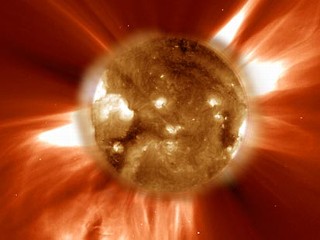 Astronaut Richard Arnold, STS-119 mission specialist, participates in the mission's first scheduled session of extravehicular activity (EVA) as construction and maintenance continue on the ISS on March 19, 2009. Credit: NASA.
Astronaut Richard Arnold, STS-119 mission specialist, participates in the mission's first scheduled session of extravehicular activity (EVA) as construction and maintenance continue on the ISS on March 19, 2009. Credit: NASA.From Live Science:
The smell of space will linger for the seven astronauts aboard the space shuttle Discovery long after they return to Earth on Saturday.
"One thing I've heard people say before, but it wasn't so obvious, was the smell right when you open up that hatch," Discovery pilot Dominic "Tony" Antonelli said after a March 21 spacewalk. "Space definitely has a smell that's different than anything else."
The odor, Antonelli said, could be smelled once spacewalkers locked the station airlock's outer hatch and reopened the inner door.
Read more ....














